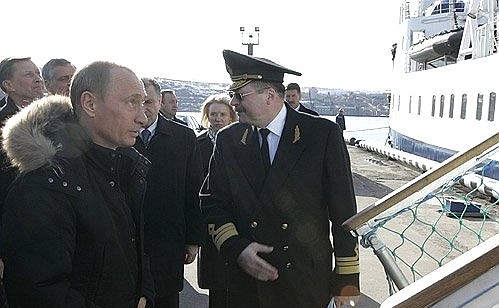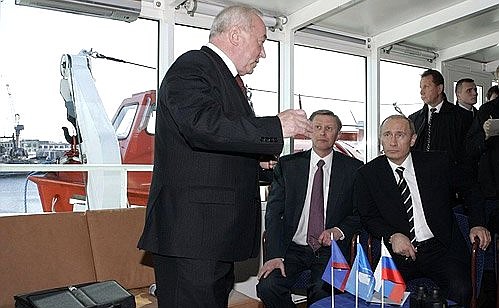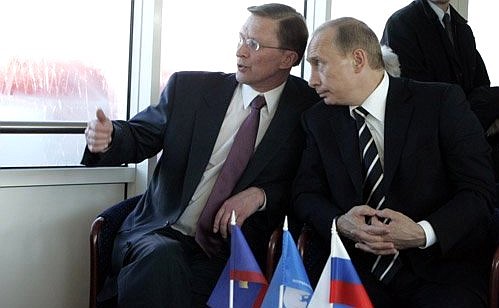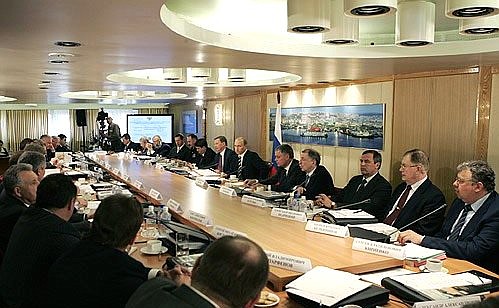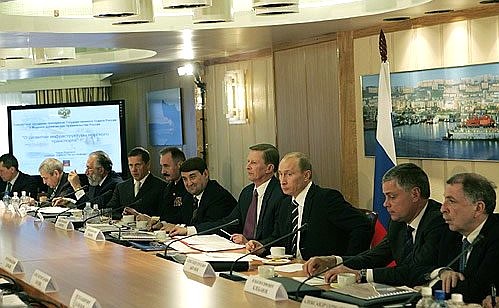The meeting took place as a joint session of the State Council Presidium and the Government Marine Collegium.
In his opening remarks, Mr Putin spoke of the need to make Russia’s sea transport sector more competitive through coordinated development of all the sector’s different components. The President noted that this is one of the priorities set out in the country’s Marine Doctrine for the period through to 2020. Russia’s integration into the global transport system and its economic development will depend on how competitive its sea transport infrastructure becomes, Mr Putin said.
Mr Putin instructed the Marine Collegium to coordinate work to develop the big ports on the Baltic, Black Sea, in the Far East and on the Northern sea route.
The meeting set out a package of concrete measures. Mr Putin gave his support to the idea of establishing a national Arctic council chaired by the Prime Minister. The President also proposed drafting a new federal targeted programme for developing the country’s transport system over the period 2010–2015. Transport sector policy will have an impact on economic development throughout the entire country, Mr Putin said in his concluding remarks.
The President’s opening and concluding remarks at the meeting will be published.
Earlier in the day, Mr Putin visited the new atomic-powered icebreaker 50 Let Pobedy. The ship is a new model icebreaker, incorporating new technological solutions, which will be produced in series. The icebreaker was commissioned by the Murmansk Shipping Company this year. The Murmansk Shipping Company operates an icebreaker fleet and organises icebreaker-led shipping along the Northern sea route and in and out of Russian ports that ice over in the winter. The company operates 310 ships with total deadweight of around 2 million tons. The company employs around 5,000 people and its fleet accounts for 40 percent of total transport volume of ships operating under the Russian flag. It accounts for up to 80 percent of freight traffic on the Northern sea route.
From on board the motor ship Polaris, Mr Putin also inspected sea transport infrastructure facilities in the Kola Gulf earlier in the day. The Kola Gulf has good geographical and climate conditions for handling large-tonnage ships and gives the port of Murmansk crucial significance in the economic development of Russia’s northwest region and the Arctic. The Murmansk commercial port is one of Russia’s biggest ice-free ports and is open year-round for shipping via the open ocean and the Northern sea route. Infrastructure development plans on the western coast of the Kola Gulf include building an oil and petroleum products terminal, a coal terminal and a container terminal. By 2010, the Murmansk transport hub is forecast to handle annual freight traffic of around 50 million tons, and this will increase to around 70 million — 75 million tons a year by 2015.
